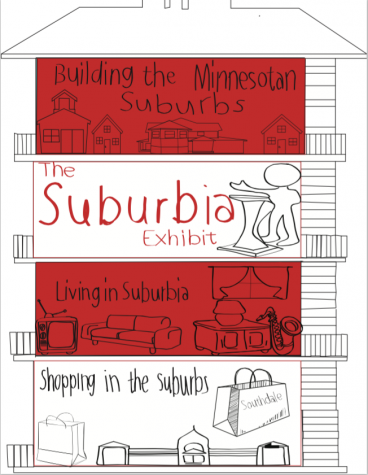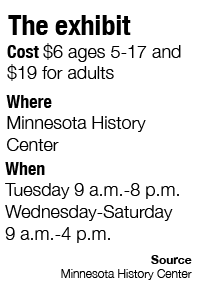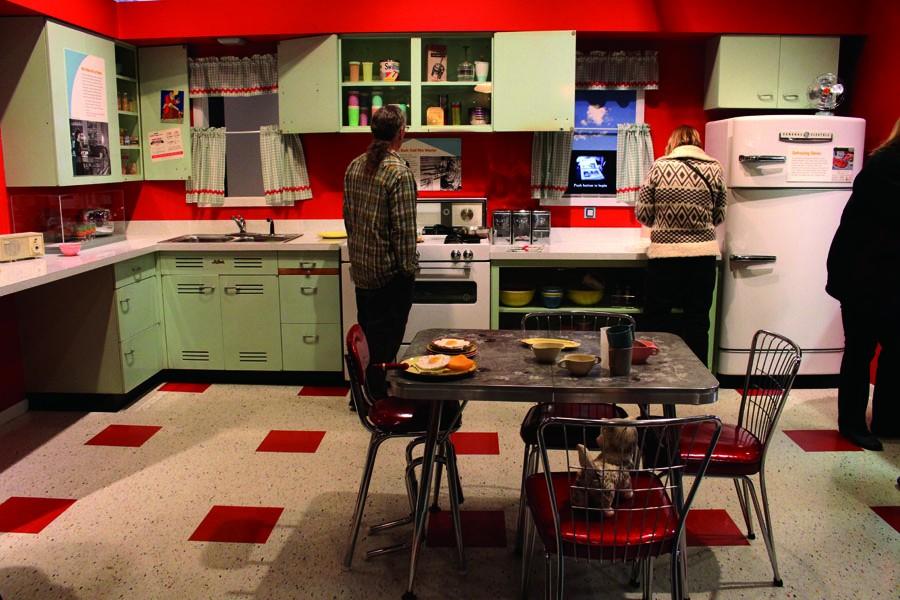Explore ‘Suburbia’
Minnesota History Center provides glimpse into the past
For Kate Roberts, senior exhibit developer at the Minnesota History Center, walking through the Southdale Shopping Center portion of the “Suburbia” exhibit brings back memories.
“I have so many memories of Southdale at so many different points in my life going there. It was really interesting for me to learn that there is a long history of that building,” Roberts said. “I think that is what we hear from a lot of our visitors — that they like going to the exhibit and then they connect with something from their own lives.”
Roberts said the exhibit consists of four sections, beginning with “Building Suburbia,” where visitors walk through the construction of the suburbs. Visitors then enter “Living in Suburbia,” a model home that features the structure of family life following World War II.
“Shopping in Suburbia” transports visitors to the Southdale Shopping Center when it opened in 1956. “Future of Suburbia” explores what’s next for the suburbs.
“The exhibit is like all other of our exhibits in that it is sort of meant to really engage people in history through storytelling, through hands-on activities and through great objects,” Roberts said. “Specifically in this exhibit, what we want to do is take people through the time in history after World War II when many of the Twin Cities suburbs were getting developed.”
According to Roberts, the exhibit intends to show visitors the desire of Minnesotans during this time period to move to the suburbs and establish a home of their own.
“All the way through we are explaining how, at the time, all of these things were coming together in really both shaping people’s lives,” she said.
For sophomore Kelly Thompson, the portion regarding the Southdale Shopping Center interests her because she said she enjoys to shop.
“I think it would be interesting to go to see how (people) first started out shopping,” Thompson said.
Roberts said she hopes “Suburbia” teaches visitors the lesson of paying attention to their environments.
“I mean when you look at houses, when you look at neighborhoods and when you look at Knollwood Mall, there is a reason why those things got built,” Roberts said. “This exhibit will give you a take on your community and its history.”
Additionally, Roberts said she wants visitors to walk away from the exhibit reflecting on their own lives for a little bit.
 “I think it is important to learn about the history because when you are looking into your own future and how you want to live and where you want to live and why you make the choices you do, it is interesting to have information about the choices people made in the past,” Roberts said.
“I think it is important to learn about the history because when you are looking into your own future and how you want to live and where you want to live and why you make the choices you do, it is interesting to have information about the choices people made in the past,” Roberts said.
Thompson said she encourages students to attend the exhibit to see how the landscape of the Twin Cities changed over time.
“Someone would want to go to learn about the history of the area they are living in,” Thompson said. “It seems really cool to learn where you started, where the area started out and ended.”


 “I think it is important to learn about the history because when you are looking into your own future and how you want to live and where you want to live and why you make the choices you do, it is interesting to have information about the choices people made in the past,” Roberts said.
“I think it is important to learn about the history because when you are looking into your own future and how you want to live and where you want to live and why you make the choices you do, it is interesting to have information about the choices people made in the past,” Roberts said.



